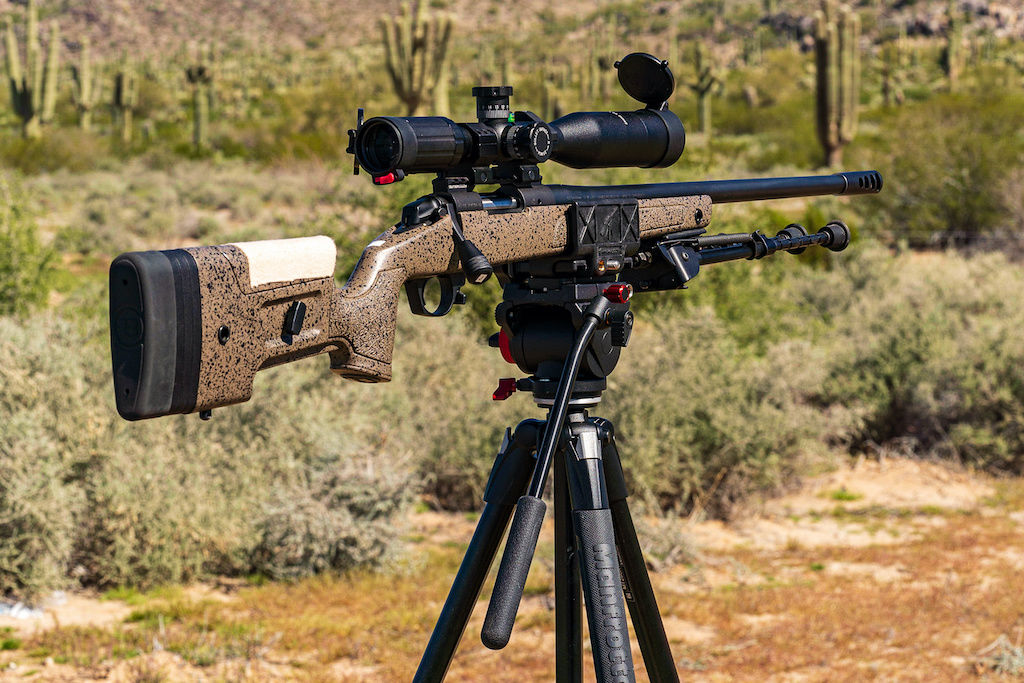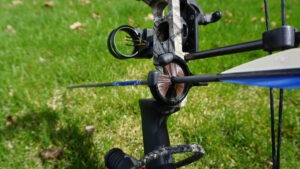Rhode Island is a haven for trout fishing enthusiasts, offering a diverse range of trout species and a plethora of picturesque fishing locations to explore. Whether you are an experienced angler or a novice looking to reel in your first trout, this article will guide you through everything you need to know to have a successful fishing adventure in the beautiful state of Rhode Island.
Understanding Rhode Island’s Trout Species
Before embarking on your trout fishing journey, it is essential to familiarize yourself with the different trout species that inhabit Rhode Island’s waters. This knowledge will not only enhance your fishing experience but also increase your chances of catching the trophy fish of your dreams.
Rhode Island, with its diverse waterways, is home to a variety of trout species that offer anglers a thrilling challenge. Let’s dive deeper into the characteristics and habits of these magnificent fish.
Identifying Different Trout Species
One of the most common trout species found in Rhode Island’s waters is the rainbow trout. Easily recognizable by its vibrant colors and distinct pink stripe along its side, these trout are known for their acrobatic jumps and fierce fights. The rainbow trout’s beauty is matched only by its resilience, making it a prized catch for anglers of all skill levels.
Another popular species is the brown trout, known for its cunning behavior and stunning golden-brown hue. These trout possess a remarkable ability to adapt to various environments, making them a challenging target for anglers seeking a true test of their fishing skills. Brown trout are known to be particularly elusive, requiring patience and finesse to lure them out of their hiding spots.
Moreover, brook trout, with their speckled patterns and bright orange bellies, thrive in Rhode Island’s colder streams. These native trout species are a symbol of the state’s natural beauty and are highly sought after by anglers seeking an authentic fishing experience. Brook trout are known for their aggressive nature, making them an exciting catch for those who enjoy a spirited battle with their prey.
Lastly, the elusive lake trout, also known as togue, inhabit the deeper waters of Rhode Island’s lakes and ponds, offering a challenging fishing experience. These trout are known for their impressive size and strength, making them a favorite target for anglers looking to land a trophy fish. Patience and skill are key when targeting lake trout, as they require specialized techniques and equipment to entice them to bite.
Seasonal Variations in Trout Behavior
Understanding the seasonal patterns and behavior of trout is crucial in determining the best strategies for a successful fishing trip. Each season brings unique challenges and opportunities for anglers to capitalize on.
In the spring, trout become more active and eager to feed after a long winter. As the ice melts and the water temperature rises, these fish emerge from their winter hiding spots, ready to indulge in the abundance of food that becomes available. Spring is an excellent time to target trout near the water’s surface, as they are more likely to be found in shallower areas.
Summer brings warmer water temperatures, pushing trout deeper into the cool depths. As the sun beats down, these fish seek refuge in the shadows and colder pockets of water. Anglers may need to adjust their fishing techniques by using sinking lines or weighted flies to reach the trout’s preferred depth. Patience and persistence are key during this season, as trout may be less active and more selective in their feeding habits.
As fall approaches, trout prepare for the breeding season, making them more aggressive and territorial. The cooling temperatures and changing colors of the foliage create an enchanting backdrop for anglers seeking a memorable fishing experience. During this time, trout are more likely to strike at lures and flies that mimic small fish or insects, as they are actively feeding to build up their energy reserves for the upcoming winter.
During winter, trout slow down their activity and seek refuge in the deepest parts of the water. Ice fishing becomes a popular pursuit for anglers looking to test their skills and patience. With the water temperatures dropping significantly, trout’s metabolism slows down, making them less active and more cautious. Ice anglers must be well-prepared with appropriate gear and techniques to entice these cold-water dwellers to bite.
By understanding the seasonal variations in trout behavior, anglers can tailor their fishing techniques to match these patterns, significantly impacting their catch rate. Whether you prefer the thrill of catching a rainbow trout’s acrobatic leap or the challenge of outsmarting a wily brown trout, Rhode Island’s waters offer a diverse range of trout species to satisfy every angler’s desire.
Top Trout Fishing Locations in Rhode Island
When it comes to trout fishing locations, Rhode Island truly has it all, whether you prefer the tranquility of freshwater ponds or the thrill of coastal fishing. Each location has its unique charm and offers a different angling experience.
Rhode Island is a hidden gem for trout fishing enthusiasts. With its diverse landscape, you can find both coastal and inland fishing spots that will satisfy your angling cravings. Whether you’re a seasoned angler or a beginner looking to cast your first line, Rhode Island has something for everyone.
Coastal vs Inland Fishing Spots
The coastal areas of Rhode Island provide excellent opportunities to catch various trout species, as well as enjoy stunning scenery and breathtaking ocean views. From Point Judith in the south to the beaches of Misquamicut in the west, anglers can cast their lines from shore or venture out into the calm waters by boat.
Imagine standing on the sandy shores, feeling the gentle breeze on your face, and casting your line into the crystal-clear waters. The excitement builds as you wait for that telltale tug on your fishing rod. The coastal fishing spots in Rhode Island offer not only a chance to catch trout but also a chance to immerse yourself in the beauty of nature.
Inland fishing spots, such as the famous Wood River or the Big River Management Area, offer a tranquil environment to immerse yourself in nature and test your angling skills. These areas are known for their abundant populations of brook trout and brown trout, enticing both beginners and experienced anglers alike.
Picture yourself surrounded by lush greenery, the sound of birds chirping in the background, and the peaceful flow of the river. The tranquility of these inland fishing spots allows you to escape the hustle and bustle of everyday life and connect with nature on a deeper level.
Accessibility and Amenities of Fishing Locations
Accessibility and amenities are essential factors to consider when selecting trout fishing locations in Rhode Island. Many fishing spots offer ample parking, well-maintained trails, and even fishing piers, ensuring easy access for all anglers. Additionally, some locations provide picnic areas and restroom facilities, allowing you to maximize your comfort during your fishing adventure.
Imagine arriving at your chosen fishing spot and finding a designated parking area just a short walk away from the water. You unload your fishing gear with ease, knowing that you won’t have to trek through miles of rough terrain to reach your fishing spot. Rhode Island’s fishing locations prioritize accessibility, making it convenient for anglers of all ages and abilities.
After a long day of fishing, you can take a break and enjoy a picnic with your friends and family. Many fishing spots in Rhode Island offer picnic areas where you can relax, refuel, and share stories of the ones that got away. And if nature calls, restroom facilities are available, ensuring that your fishing experience remains comfortable and convenient.
So whether you prefer the excitement of coastal fishing or the tranquility of inland spots, Rhode Island has it all. With its diverse range of fishing locations and amenities, you’re sure to find the perfect spot to cast your line and reel in your next trout.
Essential Gear for Trout Fishing
Equipping yourself with the right gear is crucial for a successful trout fishing trip. When it comes to rods, reels, and fishing lines, choosing lightweight options with a sensitive tip will allow you to detect even the lightest nibbles from the crafty trout. Spooling your reel with a suitable monofilament or fluorocarbon line is also essential for minimizing visibility in the water and increasing your chances of a bite.
Bait and Lures: What Works Best?
Trout have a diverse palate, making bait selection an important aspect of trout fishing. Live bait such as worms, minnows, and crickets can be highly effective, especially when fishing in cold-water streams. However, artificial lures such as spinners, spoons, and soft plastic baits are also favored by many anglers for their versatility and ability to mimic natural prey.
Experimenting with different bait and lure options will help you determine what works best for the particular trout species you are targeting and the prevailing conditions.
Rhode Island Fishing Regulations
Before casting your line, it is essential to familiarize yourself with Rhode Island’s fishing regulations to ensure you stay within the legal boundaries. Obtaining the necessary fishing licenses and permits is mandatory for all anglers aged 16 and older. These permits can be easily obtained online or from authorized vendors throughout the state.
Licensing and Permit Requirements
Additionally, Rhode Island strives to protect its trout populations through catch and release regulations. Familiarizing yourself with the specific size and bag limits of each trout species will ensure the long-term sustainability of the fishery and contribute to the conservation efforts. It is also essential to stay updated on any changes to the fishing regulations, as they may vary from year to year.
Catch and Release Guidelines
Adhering to proper catch and release practices is crucial in maintaining healthy trout populations. Handling fish with wet hands, using barbless hooks, and minimizing the duration of their time out of the water are important steps to ensure the survival of released fish. Taking these measures not only supports the trout population but also ensures anglers can enjoy the thrill of catching trout for years to come.
Tips and Techniques for Successful Trout Fishing
While having the right gear and knowledge is essential, employing the right tips and techniques can make all the difference in your trout fishing success.
Reading the Water for Trout
Understanding how to read the water and identify the ideal trout habitats can vastly improve your fishing endeavors. Trout tend to congregate near underwater structures such as fallen trees, submerged rocks, or deep pools where they can find shelter and ambush prey. By targeting these areas, you enhance your chances of hooking a trophy trout.
Best Times of Day for Trout Fishing
The time of day can also significantly impact trout activity. Generally, trout are most active during dawn and dusk when the water temperatures are cooler. However, factors such as weather conditions, water temperature, and seasonal patterns may influence their feeding behavior. Adjusting your fishing schedule accordingly can maximize your chances of encountering active and hungry trout.
In conclusion, Rhode Island offers a haven for trout fishing enthusiasts, boasting a diverse array of trout species and breathtaking fishing locations. By understanding the different trout species, selecting the right gear, adhering to fishing regulations, and implementing effective techniques, you will embark on a trout fishing adventure that promises excitement, tranquility, and the potential for memorable catches. So, pack your fishing gear and get ready to discover the best trout fishing in Rhode Island!


